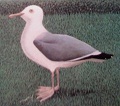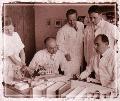
DMT-Nexus member
Posts: 1926 Joined: 10-May-2009 Last visit: 27-Apr-2015 Location: ☂
|
I found a single mushroom today that looks just like Panaeolus cinctulus (also known as Panaeolus subbalteatus). I couldn't believe my own eyes, as this mushroom never have been documented to grow in my country. So, is this really Panaeolus cinctulus? Ginkgo attached the following image(s):  IMG_2312.JPG (608kb) downloaded 175 time(s). IMG_2313.JPG (653kb) downloaded 175 time(s). IMG_2315.JPG (598kb) downloaded 175 time(s).
|
|
|
|
|

Derek
Posts: 1210 Joined: 12-Mar-2009 Last visit: 23-Jun-2011 Location: here there and everywhere
|
hard to tell.. id say take a spore print and check with a microscope i think thats what the pros do "once youve locked yourself into a serious drug collection the tendency is to push it as far as you can..." - hunter s. thompson
~~~~~~~~...You are me and i am you, i will always be with you...~~~~~~~~IAmUsWeYouMe~~~~~~~~
‹maxzar100› YOU are like acid
‹mattimus› dosesdosingdoses
|
|
|

DMT-Nexus member
Posts: 1926 Joined: 10-May-2009 Last visit: 27-Apr-2015 Location: ☂
|
Okay, I will try to take a spore print and see what color it is.
|
|
|

DMT-Nexus member
Posts: 1926 Joined: 10-May-2009 Last visit: 27-Apr-2015 Location: ☂
|
The spore print is black, and according to the people at Shroomery, that means this is really P. cinctulus.
|
|
|

DMT-Nexus member
 
Posts: 1139 Joined: 14-Jul-2008 Last visit: 01-Apr-2017 Location: USA
|
While a black-purple spore print is a good sign it is not in itself sufficient. There are other characteristics aside from a black spore print that are necessary for accurate identification.
Did it bruise blue? (P subb many times will bruise blue)
Also what was the environment where this mushroom was found?
Are the gills dark brown-black and spotted? (They do not look like it from the picture, Mature Panaeolus usual have spotted gills containing gray and black zones)
P. sub favors horse shit. Although in well manured grass it is possible to find one. Also the stem is darkish with whitish flecks (the mushroom in the pic seems to lack this characteristic). I have seen similar mushrooms to the one you collected that are non panaeolus. The gills seem lighter in the picture than true panaeouls subb the gills should be brownish and molted It also has a dark band around the margin. Sometimes when mushrooms dry out they develop what looks like a panaeolus type dark band although it is not.
Spores blackish. Side view of spores should be lemon shaped.
It can be hard to tell from a picture. Also a single mushroom can show strange characteristics and thus it is good t ohave multiple samples from the same patch to use.
|
|
|

DMT-Nexus member
Posts: 1926 Joined: 10-May-2009 Last visit: 27-Apr-2015 Location: ☂
|
I just want to add that I have found a total of 23 mushrooms growing at the same compost, all beyond any doubt P. cinctulus.
I like that you stress the importance of correct identification, bufoman, but what you wrote are sadly partly wrong. Cinctulus does not favor horse shit, in fact, it is rarely found on horse droppings. The spores are not black-purple, they are jet black. The gills does not need to be dark-brown, in fact, they are light brown in young specimen and blackish brown in older ones. Also, the stem does not need to have white flecks, young specimen have a totally or nearly totally white stem, while as they grow older, they get darker.
On a side note, the dark band is not from drying out - the mushroom on the picture was totally wet (you can see this at the pictures). Several mushrooms later found at the same place where dried out, at these the dark band was almost entirely diminished. Several were almost yellow. This is totally consistent with what P. cinctulus normally do when drying out.
|
|
|

DMT-Nexus member
 
Posts: 1139 Joined: 14-Jul-2008 Last visit: 01-Apr-2017 Location: USA
|
I have never seen these mushrooms personally but was going off of a description of Panaeolus subbalteatus, in Paul Stamets book, Psilocybin Mushrooms of the World (an identification Guide). Which states exactly what I said. I would like to know where you obtained your description of this species and other information and how you are so certain that it is the correct species?
The shroomery also claims that these mushrooms are many times found in horse fields. Please tell me where you obtained your information as I am skeptical that Stamets (an expert is wrong) although he could be. However based on others reports it does seem that these mushrooms are commonly found in horse fields. They may also be found in other places but ARE DEF ALSO FOUND ON HORSE MANOR COMMONLY.
Furthermore I have found mushrooms that looked identical to the one in the picture (although pics are difficult for ID) that were not panaeolus. Unless you are willing to bet your life on it I would not eat any wild mushroom. Also conocybes are reported to grow next to these mushrooms (on the shroomery) so be careful some are poisonous make sure every single mushroom collected is the correct species 100%. You must be willing to bet your life on it.
|
|
|

DMT-Nexus member
Posts: 1926 Joined: 10-May-2009 Last visit: 27-Apr-2015 Location: ☂
|
I admire your interested in helping fellow psychonauts, but I am totally sure that this is indeed P. cinctulus. The description I wrote is taken partly from a swedish site ( Magiske Molekyler 1 and Magiske Molekyler 2), Wikipedia, an ID guide at Shroomery and a thread at Shroomery. I must stress the fact that I have now looked close at every one of the 23 mushrooms found, and every one of these is totally consistent with what I have read at the above sites.
|
|
|

DMT-Nexus member
 
Posts: 1139 Joined: 14-Jul-2008 Last visit: 01-Apr-2017 Location: USA
|
I would check out Stamets book as it gives descriptions from the mycological literature. There are mushrooms that look like the one you posted that are NOT pan. I can not read that site however if I were you I would check where they obtained that information from before I TRUSTED MY LIFE with it.
Also if you could translate some of the information on that site that would be appreciated. Such as environment as well as the color of the stem as I have heard several sources saying it is most common on horse manure and a dark stem (Not white as it appears in the pic).
Although it may be I just can not over emphasize the fact that you have to be 100% sure if you are planning to eat them.
|
|
|

DMT-Nexus member
 
Posts: 1139 Joined: 14-Jul-2008 Last visit: 01-Apr-2017 Location: USA
|
Check out this page for a good guide to these mushrooms. In many cases the stems are dark although it could be possible that they have a white phenotype in certain patches. http://www.shroomery.org...subbalteatus-P-cinctulusHere is what they say about the stems: Stems: The stems of this mushroom in my opinion are the easiest way to identify this species. The stem has "lines" that run up and down it. These lines DON'T go straight, but twist and turn up the stem. Stem color is also important. It ranges from an off white in fresh and younger specimens to a light tan, to a dark red, to brown. The stem is usually very thick and long (1-4 inches Long, 1/8-1/2 inches thick) (Notice the huge variation). Bluing on the base of the stem is sometimes visible, giving away that it is an active specimen.
|
|
|

DMT-Nexus member
Posts: 1926 Joined: 10-May-2009 Last visit: 27-Apr-2015 Location: ☂
|
You do not need to read the swedish site, Wikipedia and Shroomery states just the same. Anyway, here is a Google Translate of the two swedish links: Link 1Link 2It does, however, seem that you are right about the horse droppings part. I think I was put off by this sentence at Wikipedia: "(...)on compost piles, well fertilized lawns and gardens, less frequently on horse dung."
|
|
|

DMT-Nexus member
Posts: 1926 Joined: 10-May-2009 Last visit: 27-Apr-2015 Location: ☂
|
I already linked to that guide... Only difference is that I linked to the thread Subbedhunter420 posted with the same guide. As mentioned, they (nearly always) have white or almost white stems as young, darker as they age.
|
|
|

DMT-Nexus member
 
Posts: 1139 Joined: 14-Jul-2008 Last visit: 01-Apr-2017 Location: USA
|
Oh sorry. As you stated the one link you posted also states that these mushrooms grow on dung which is consistent with what is in the literature as I said though a well manured lawn could support these guys.
Stamets book is a great guide if you are interested in mushrooms. I have seen mushrooms similaur to the pic that I do not think were pan. Please be sure before bio-assaying any mushrooms, we need all of the psychonauts we got. Always check out where a websites information is coming from. Wikipedia siting erowid may or may not be reliable. But when it comes to life and death please check.
|
|
|

DMT-Nexus member
Posts: 1926 Joined: 10-May-2009 Last visit: 27-Apr-2015 Location: ☂
|
Duly noted mate! I completely agree with you on every aspect, and I will take a look at that book.
|
|
|

DMT-Nexus member
Posts: 1926 Joined: 10-May-2009 Last visit: 27-Apr-2015 Location: ☂
|
I just wanted to add that this was indeed P. cinctulus, I ate 30 medium sized mushroom with 4 D. stramonium seeds and had a mellow trip.
|